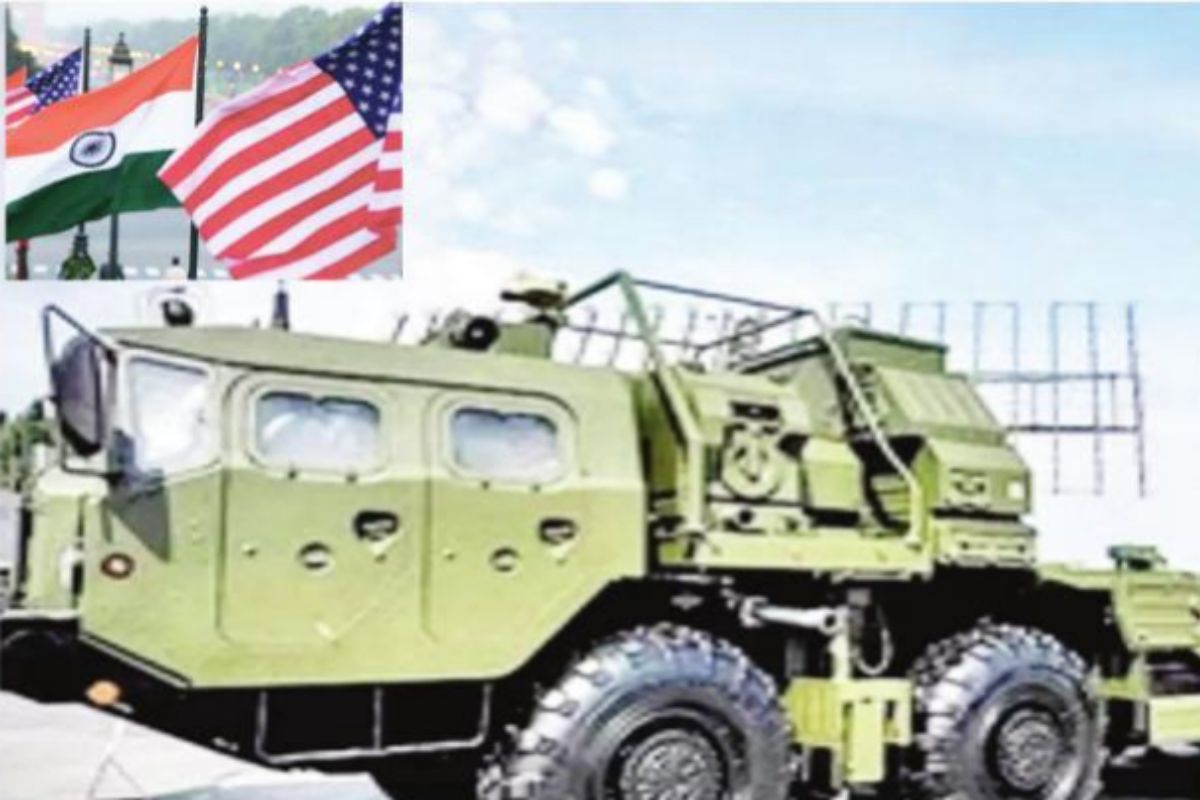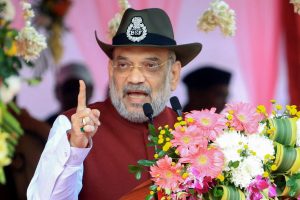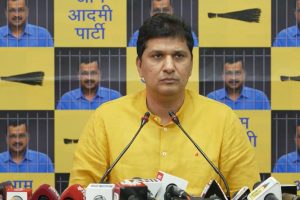I n 2018, India signed the $5 billion S-400 Air Defence System deal with Russia. This was despite the relatively recent denomination of ‘Major Defence Partner’ status with the United States in 2016. But the environmental dynamics were different as a Republican (traditionally more pro-India on security) President i.e., Donald Trump, was in the White House and the Russia-Ukraine war had not broken out. Despite Trump’s kneejerk threat of a US reaction, ‘India is soon going to find out’, his Secretary of State, Mike Pompeo, and the Secretary of Defense, James Mattis, had quietly played down the issue, contextualising India’s strategic compulsions. At stakes were the Countering America’s Adversaries Through Sanctions Act (CAATSA) imperatives that sought to sanction any nation that engaged in major defense deals with Russia, Iran or North Korea (amongst other factors). With India purchasing the sophisticated S-400 Air Defence System from Russia ~ it was tantamount to seriously red flagging the CAATSA provisions.
No less than the United States’ own Nato (North Atlantic Treaty Organisation) ally, Turkey, was sanctioned under CAATSA for purchasing the same S-400 system. While the Damocles Sword of ‘sanctions’ remained on India, the United States took no punitive decision ~ soon, the dispensation changed to the Democrats under Joe Biden and the US-Russian equation went into a further tailspin, with the war in Ukraine. As the Biden administration remained mired in the affairs of Ukraine, its frustrations with Russia and its strategic footprint globally, got even more sensitive ~ at a logical crossroad was the pending decision of a CAATSA sanction on India. However, despite the topical focus on Russia in Washington DC, there is absolutely no doubt on Capitol Hill on the primacy of China (rather than Russia) to challenge and reframe the world order with its expansionist ‘military-industrial’ establishment. US Secretary of State, Anthony Blinken, clearly posited Beijing ~ as opposed to Moscow ~ to pose, ‘the most severe long-term challenge to the international system’.
This crucial realisation offered the plausible window for New Delhi to frame its substantial argument for a waiver under CAATSA, even if the same was denied to a Nato ally i.e., Turkey. After all, it was under the Barack Obama administration with Vice President Biden in tow that the strategic semantic of ‘Pivot to Asia’ was permeated into the US’s foreign policy thinking. India, which was described by the then US Secretary of State, Hillary Clinton, as, ‘an indispensable strategic partner’ in the pivot framework ~ needed more appreciation, inclusion, and leeway in the US foreign policy calculus, as envisaged till then. Clinton had insisted, ‘Socalled pivot has been about creative diplomacy’ and, ‘there are limits to what hard power on its own can achieve. That’s why, from day one, I’ve been talking about smart power’! Smart power realistically implied as an instance recognising the differences and contexts, when assessing similar actions of ‘allies’ like Turkey and India ~ each had its own merits, nuances and sensitivities, and accepting the differences was key. India’s unique and complex situation and history resurfaced recently with Delhi abstaining on the UN vote condemning the Russian action in Ukraine.
There were security, economic and wider geopolitical considerations at stake for Delhi that prompted it to counter-intuitively join the ranks of China and 33 other nations to vote ‘abstain’, to the discomfort of the US-led bloc. The oft-bandied ‘independent foreign policy’ of India can potentially frustrate the traditional American thinking of linearity and absolutism, e.g., Delhi’s regional and civilisational relationship with Iran will always test Washington’s binary approach of ‘with us or with them’. Capitol Hill can no longer afford to view the world from its own insular lens, and if it intends to meaningfully counter China, then understanding the Indian perspective, vulnerability and thinking needs to be inculcated. India is realistically the single biggest security-economic-diplomatic bulwark to China’s expansionism, even within the Quad (Quadrilateral understanding between the Sinowary United States, Japan, Australia, and India).
A significant sign of that vital understanding was seen in the successful voice vote of a legislative amendment in the US House of Representative, seeking waiver to Delhi against CAATSA, despite its purchase of the S-400 from Russia. Passed 330-99, the bipartisan amendment brought by Congressman Ro Khanna, which is yet to be formally passed in both the House and US Senate, signifies the difference in ‘allies’ i.e., India versus even a Nato member, Turkey. Khanna alluded to the significance of the same by hailing it as, ‘the most significant piece of legislation for USIndia relations out of Congress, since the US-India Nuclear Deal’. It will certainly lay the foundation for a more nuanced appreciation of India’s position and concerns, as it navigates the sometimes seemingly contradictory journey of its ‘independent foreign policy’. Beyond civil politicians, the American security professionals had recognised this strategic reality as Admiral Harry Harris (former Commander of the US Indo-Pacific Command) had forewarned the US Senate Armed Services Committee in 2018: “Seventy percent of their military hardware is Russian in origin. You can’t expect India to go cold turkey on that.
I think we ought to look at ways to have a glide path so that we can continue to trade in arms within India” ~ this was much before the Chinese aggression in the summer of 2020 which added a completely new dimension to provide the said ‘glide path’. There is also an unsaid dimension of ‘trust’ when assessing an India versus a Turkey ~ the US has in recent times made several high-technology transfers of weaponry and other wherewithal, without any backlash of India ever passing the same to ‘adversaries’. Whereas there is an unmistakable ‘trust deficit’ with Turkey, and one of the immediate fallouts of CAATSA for Turkey was the reneging of the deal pertaining to the fifth-generation fighter plane, F-35. On the contrary, India has enhanced its security relationship with multiple strategic agreements with the United States e.g., LEMOA, COMCASA and BECA. Considering the evolving churn of the emerging world order, the imminent waiver on CAATSA is both an augury and a necessity, given the strategic reality staring at the USA, wherein a powerful India is key for the socalled ‘Free World’ bloc.











